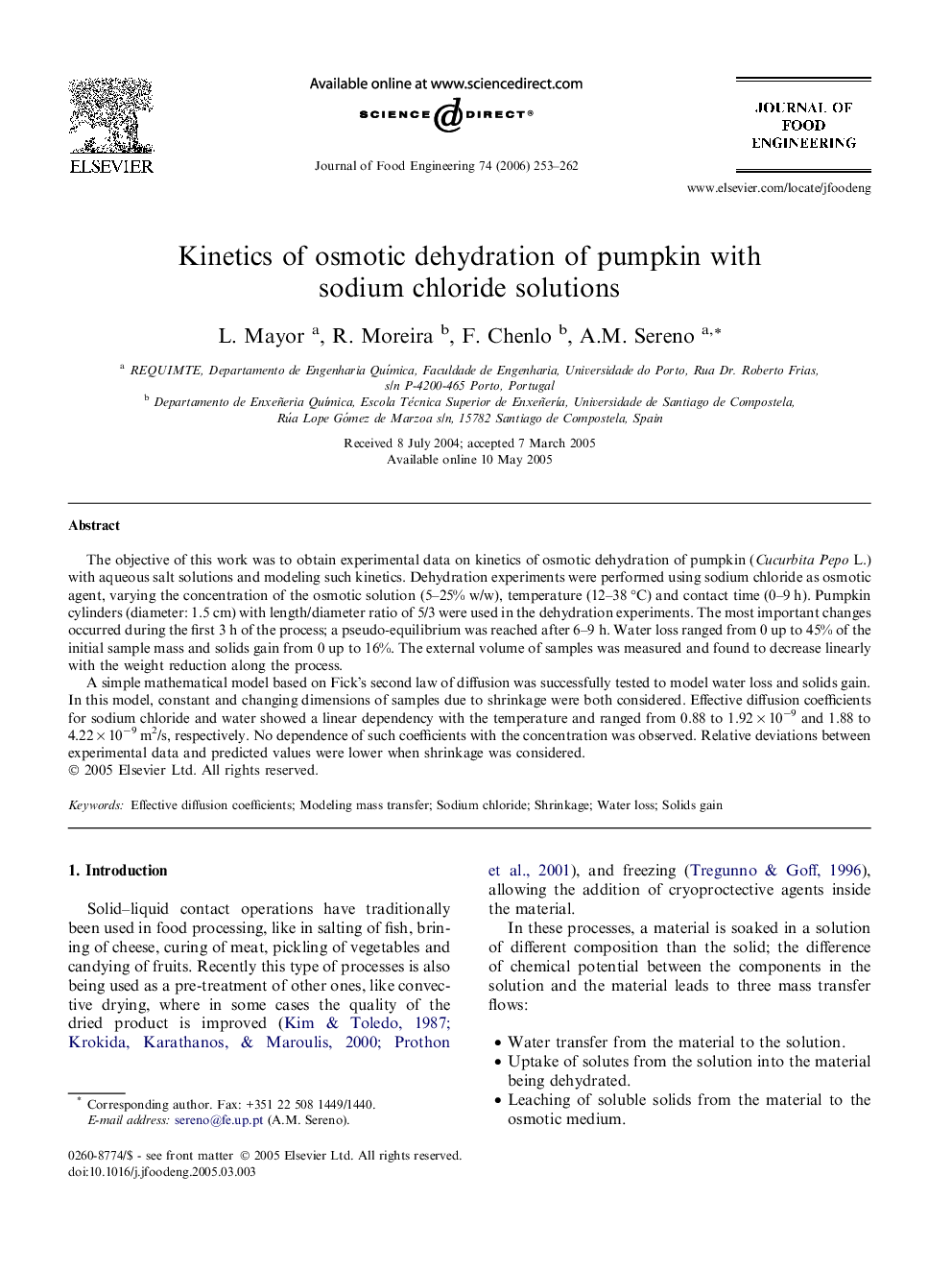| Article ID | Journal | Published Year | Pages | File Type |
|---|---|---|---|---|
| 226587 | Journal of Food Engineering | 2006 | 10 Pages |
The objective of this work was to obtain experimental data on kinetics of osmotic dehydration of pumpkin (Cucurbita Pepo L.) with aqueous salt solutions and modeling such kinetics. Dehydration experiments were performed using sodium chloride as osmotic agent, varying the concentration of the osmotic solution (5–25% w/w), temperature (12–38 °C) and contact time (0–9 h). Pumpkin cylinders (diameter: 1.5 cm) with length/diameter ratio of 5/3 were used in the dehydration experiments. The most important changes occurred during the first 3 h of the process; a pseudo-equilibrium was reached after 6–9 h. Water loss ranged from 0 up to 45% of the initial sample mass and solids gain from 0 up to 16%. The external volume of samples was measured and found to decrease linearly with the weight reduction along the process.A simple mathematical model based on Fick’s second law of diffusion was successfully tested to model water loss and solids gain. In this model, constant and changing dimensions of samples due to shrinkage were both considered. Effective diffusion coefficients for sodium chloride and water showed a linear dependency with the temperature and ranged from 0.88 to 1.92 × 10−9 and 1.88 to 4.22 × 10−9 m2/s, respectively. No dependence of such coefficients with the concentration was observed. Relative deviations between experimental data and predicted values were lower when shrinkage was considered.
